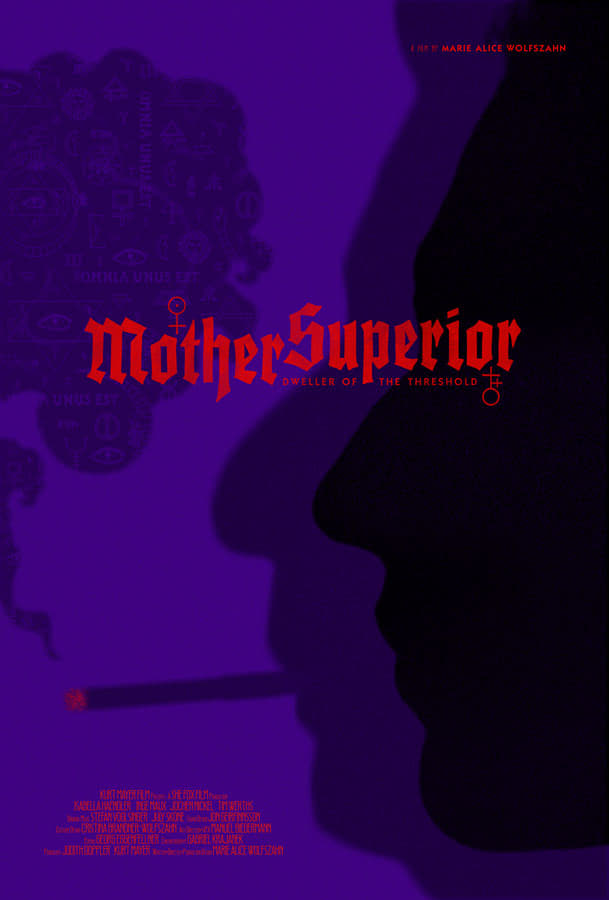
Ensemble Oni Wytars – Cantar d’amore (2015)
FLAC (tracks) 24 bit/48 kHz | Time – 01:00:51 minutes | 675 MB | Genre: Classical
Studio Masters, Official Digital Download – Source: Qobuz | Booklet, Front Cover | © deutsche harmonia mundi
Ever since people have been falling in love, songs or poetry have been written and addressed to the heart of the beloved. It’s been like this for millennia and hopefully will never change. In the past, the authors of these love songs and poems have been kings, male and female troubadours, vagrant minstrels, maestri di cappella, impoverished poets and countless others of whom unfortunately all traces have been lost. They have all have left us with an inexhaustible wealth of poetry and music, whose earliest traces go back to the Middle Ages.
In Italy, at the beginning of the 16th century musicians started to print and sell music as so-called “flying sheets” (fogli volanti) in the streets and alleys. Soon this generated an unimaginable appetite for music that people could perform themselves at home or in so-called “musical circles”, of which, around the year 1600, there existed over one hundred in Naples alone.
This appetite was appeased by numerous composers such as Bartolomeo Tromboncino, Giovan Thomaso di Maio, Johannes Hieronymus Kapsberger, Sbruffapappa, Giovanni Domenico Da Nola and many others, who wrote great quantities of relatively simple and catchy songs that dealt mainly with one topic: love.
Piazza Castello became the musical centre of Naples, along with the Taverna del Cerriglio and the Scoglio di San Leonardo, where musicians and poets gathered to compose new villanelle, which the people would make their own, singing them in the streets and at celebrations. If one of these musicians was especially popular with his audience he would be invited to court to sing his songs which had already become famous in the streets and town squares. As these compositions from the “lower strata of society” were merely passed on orally, it was not uncommon that court musicians would note down the melodies they heard on these occasions to contrast them with the state-of-the-art and elitist “Flemish counterpoint”. From the material collected in this way they then created their own compositions that met the fashions and tastes of their time. This music had an incredible potential, and so it was that the profane “villanella” (little peasant song) with its typical parallel melodic behaviour finally found its way into aristocratic society, and with it instruments from folk music such as the colascione and the chitarra battente. For the first time there emerged songbooks “for everyone”, or at least for those belonging to that class who could afford to while away their time playing the lute. These collections contained, among others, frottole (sillinesses, fibs), canzone, ballate, barzellette (jests), villanelles and madrigals, all of which dwelt on love and the associated pleasures and pains in a most extensive manner.
In 1537, “Joannes de Colonia”, a German printer who lived in Venice, published the first printed collection of villanelle. It contains fifteen so-called “canzone villanesche” (rural songs) by different authors, which enjoyed huge popularity for many years. The art of an interpreter of these songs laid in performing them with such great conviction, ease, virtuosity and at the same time with such touching simplicity that they practically became his own. At a time where polyphony gained more and more importance, this style was regarded as the perfect rebirth of antique classical poetry, where it was more important to interpret the often dramatic content than to lose yourself in artistic elaborations. Admittedly, this kind of singing had already been widespread in the oral tradition of the Mediterranean before the Renaissance, and it still is today. Athanasius Kircher (1602-1680) was a German Jesuit and polymath who taught and researched at the Collegium Romanum in Rome. His book Magnes sive de arte magnetica opus tripartitum was the first one to document the phenomenon of “tarantismo”, a ritual where the frantic rhythm of the “tarantella” is supposed to drive the spider’s poison out of its victim’s body – only one of many traditions that have survived into the 20th century, and maybe even until today. It does not take long to discover the traces left by these songs in today’s Central and Southern Italian traditional music: the melismatic singing, the rhythmic and harmonic models, even some musical instruments have practically been in uninterrupted use since the 16th century and are an inherent part of this folk music.
In this new project the ensemble Oni Wytars, together with the Roman singer Gabriella Aiello, are making this timeless poetry their own and interpret it – as usual in their own inimitable style. (Sources: Aurelio Fierro: Le origini di un canto; Mimmo Liguoro: I Posteggiatori napoletani, Roberto De Simone: Disordinata storia della canzone napoletana) Ensemble Oni Wytars, 2015 Translation: Iris Zimmermann
Tracklist
1 Traditional: Alla montanara
2 Joan Ambrosio Dalza: Calata
3 Sbruffapappa: Vurria ca fosse ciaola
4 Traditional: Serenata sulla Ceccola
5 Giovan Tomaso di Maio: Maronna nun è cchiù
6 Athanasius Kircher: Antidotum Tarantulae
7 Traditional: Pizzica di San Vito
8 Giacomo Gorzanis: Questi cappelli d’or
9 Traditional: Cinquecento catenelle
10 Barbara Strozzi: Che si può fare
11 Alonso Mudarra: Romanesca
12 Pietro Jacopo de Jennaro: Vulumbrella
13 Traditional: Alla femminisca
14 Bartolomeo Tromboncino: Tu dormi
15 Traditional: La rondinella
16 Traditional: Ninna nanna palermitana
Personnel
Gabriella Aiello, vocals, catanets
Peter Rabanser, vocals, baroque guitar, chalumeau, bagpipe
Riccardo Delfino, vocals, double harp
Marco Ambrosini, nyckelharpa, jew‘s harp, mandolin
Michael Posch, recorder
Katharina Dustmann, percussion
Download:










![Maria Callas - Remastered The Complete Studio Recordings 1949-1969 (2014) [Qobuz FLAC 24bit/96kHz] Maria Callas - Remastered The Complete Studio Recordings 1949-1969 (2014) [Qobuz FLAC 24bit/96kHz]](https://getimg.link/images/imgimgimg/uploads/2018/12/Vw7IHlv-1.jpg)
![Pacifica Quartet - Dmitri Shostakovich and his Contemporaries: The Soviet Experience Vol. 1-4 (2011-2013) [24bit FLAC] Pacifica Quartet - Dmitri Shostakovich and his Contemporaries: The Soviet Experience Vol. 1-4 (2011-2013) [24bit FLAC]](https://getimg.link/images/imgimgimg/uploads/2017/07/ntIbtOp.jpg)
![Ottavio Dantone, Alessandro Tampieri, Accademia Bizantina - Vivaldi: Concerti per archi III e concerti per viola d’amore (2018) [FLAC 24bit/88,2kHz] Ottavio Dantone, Alessandro Tampieri, Accademia Bizantina - Vivaldi: Concerti per archi III e concerti per viola d’amore (2018) [FLAC 24bit/88,2kHz]](https://getimg.link/images/imgimgimg/uploads/2018/10/hHRmgZu.jpg)
![Anton Batagov & Nadine Koutcher - 16+ (2019) [FLAC 24bit/48kHz] Anton Batagov & Nadine Koutcher - 16+ (2019) [FLAC 24bit/48kHz]](https://getimg.link/images/imgimgimg/uploads/2019/09/qWN8mPx.jpg)
![Lisa Delan - A Certain Slant of Light (2018) [FLAC 24bit/96kHz] Lisa Delan - A Certain Slant of Light (2018) [FLAC 24bit/96kHz]](https://getimg.link/images/imgimgimg/uploads/2019/10/sddgHaA.jpg)
![György Kurtág - Complete Works For Ensemble And Choir (2017) [FLAC 24bit/96kHz] György Kurtág - Complete Works For Ensemble And Choir (2017) [FLAC 24bit/96kHz]](https://getimg.link/images/imgimgimg/uploads/2017/12/vU0M3pQ.jpg)
![Ensemble Aedes & Mathieu Romano - Faure: Requiem - Poulenc: Figure Humaine - Debussy: 3 Chansons (2019) [FLAC 24bit/96kHz] Ensemble Aedes & Mathieu Romano - Faure: Requiem - Poulenc: Figure Humaine - Debussy: 3 Chansons (2019) [FLAC 24bit/96kHz]](https://getimg.link/images/imgimgimg/uploads/2019/12/aE6u27y.jpg)
![Ensemble Correspondances & Seebastien Dauce - Charpentier: Histoires sacrees (2019) [FLAC 24bit/88,2kHz] Ensemble Correspondances & Seebastien Dauce - Charpentier: Histoires sacrees (2019) [FLAC 24bit/88,2kHz]](https://getimg.link/images/imgimgimg/uploads/2019/12/SAy0dQV.jpg)
![Zuzana Ruzickova - J.S. Bach: The Complete Keyboard Works (2016) [FLAC 24bit/96kHz] Zuzana Ruzickova - J.S. Bach: The Complete Keyboard Works (2016) [FLAC 24bit/96kHz]](https://getimg.link/images/imgimgimg/uploads/2018/09/r94XYtX.jpg)
![Piers Lane, Howard Shelley - Williamson: Complete Piano Concertos (2014) [FLAC 24bit/96kHz] Piers Lane, Howard Shelley - Williamson: Complete Piano Concertos (2014) [FLAC 24bit/96kHz]](https://getimg.link/images/imgimgimg/uploads/2017/01/PsKdW8Y.jpg)
![Paul Lewis, BBC Symphony, Jiri Belohlavek - Beethoven. Complete Piano Concertos (2010) [eClassical 24bit/44,1kHz] Paul Lewis, BBC Symphony, Jiri Belohlavek - Beethoven. Complete Piano Concertos (2010) [eClassical 24bit/44,1kHz]](https://getimg.link/images/imgimgimg/uploads/2015/08/6l3yAzp.jpg)
![Anna Netrebko - Puccini: Manon Lescaut (2016) [HDTracks FLAC 24bit/48kHz] Anna Netrebko - Puccini: Manon Lescaut (2016) [HDTracks FLAC 24bit/48kHz]](https://getimg.link/images/imgimgimg/uploads/2018/01/81PVGQ0.jpg)
![Royal Stockholm Philharmonic Orchestra & Andrew Manze - Martinsson: Presentiment (2018) [FLAC 24bit/96kHz] Royal Stockholm Philharmonic Orchestra & Andrew Manze - Martinsson: Presentiment (2018) [FLAC 24bit/96kHz]](https://getimg.link/images/imgimgimg/uploads/2019/12/Oje1Jh3.jpg)
![Jeremy Irons, Matt Haimovitz & Uccello - Angel Heart: A Music Storybook (2018) [FLAC 24bit/96kHz] Jeremy Irons, Matt Haimovitz & Uccello - Angel Heart: A Music Storybook (2018) [FLAC 24bit/96kHz]](https://getimg.link/images/imgimgimg/uploads/2019/12/bGajm4y.jpg)
![Georg Friedrich Handel - Messiah, HWV 56 - Chor des Bayerischen Rundfunks, B’Rock, Peter Dijkstra (2015) [Qobuz FLAC 24bit/48kHz] Georg Friedrich Handel - Messiah, HWV 56 - Chor des Bayerischen Rundfunks, B’Rock, Peter Dijkstra (2015) [Qobuz FLAC 24bit/48kHz]](https://getimg.link/images/imgimgimg/uploads/2017/06/WEQIATt.jpg)